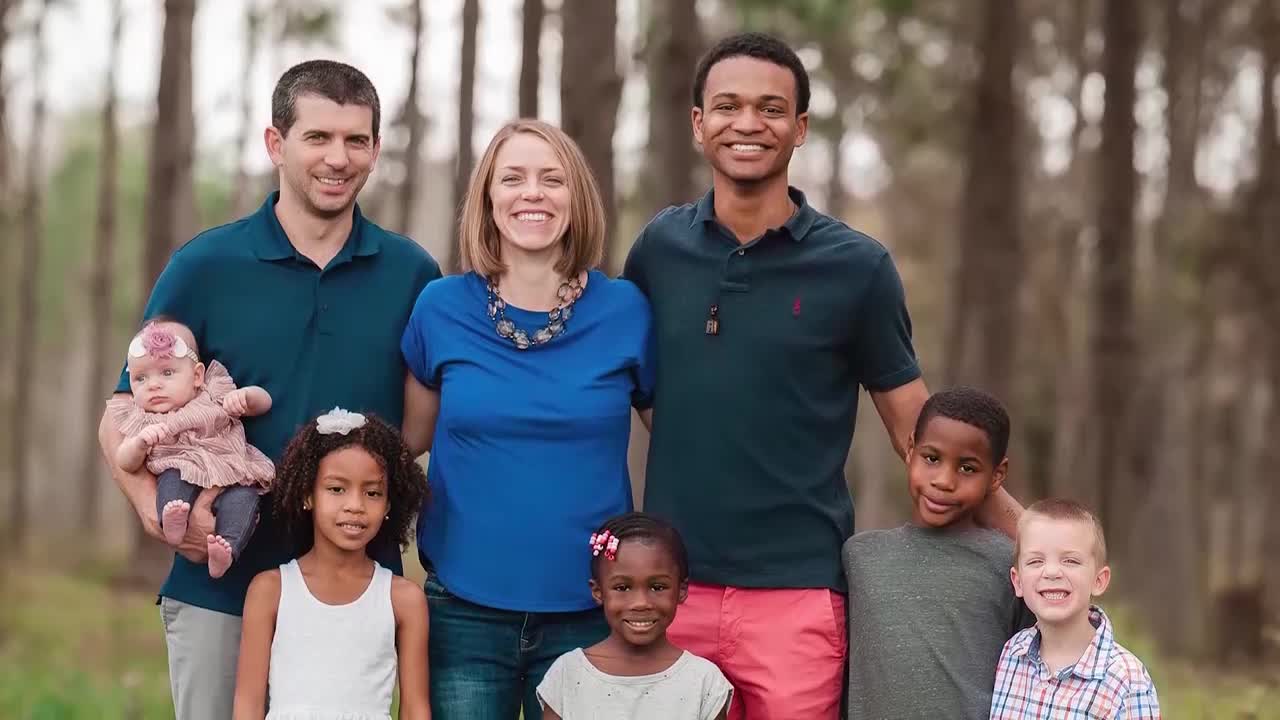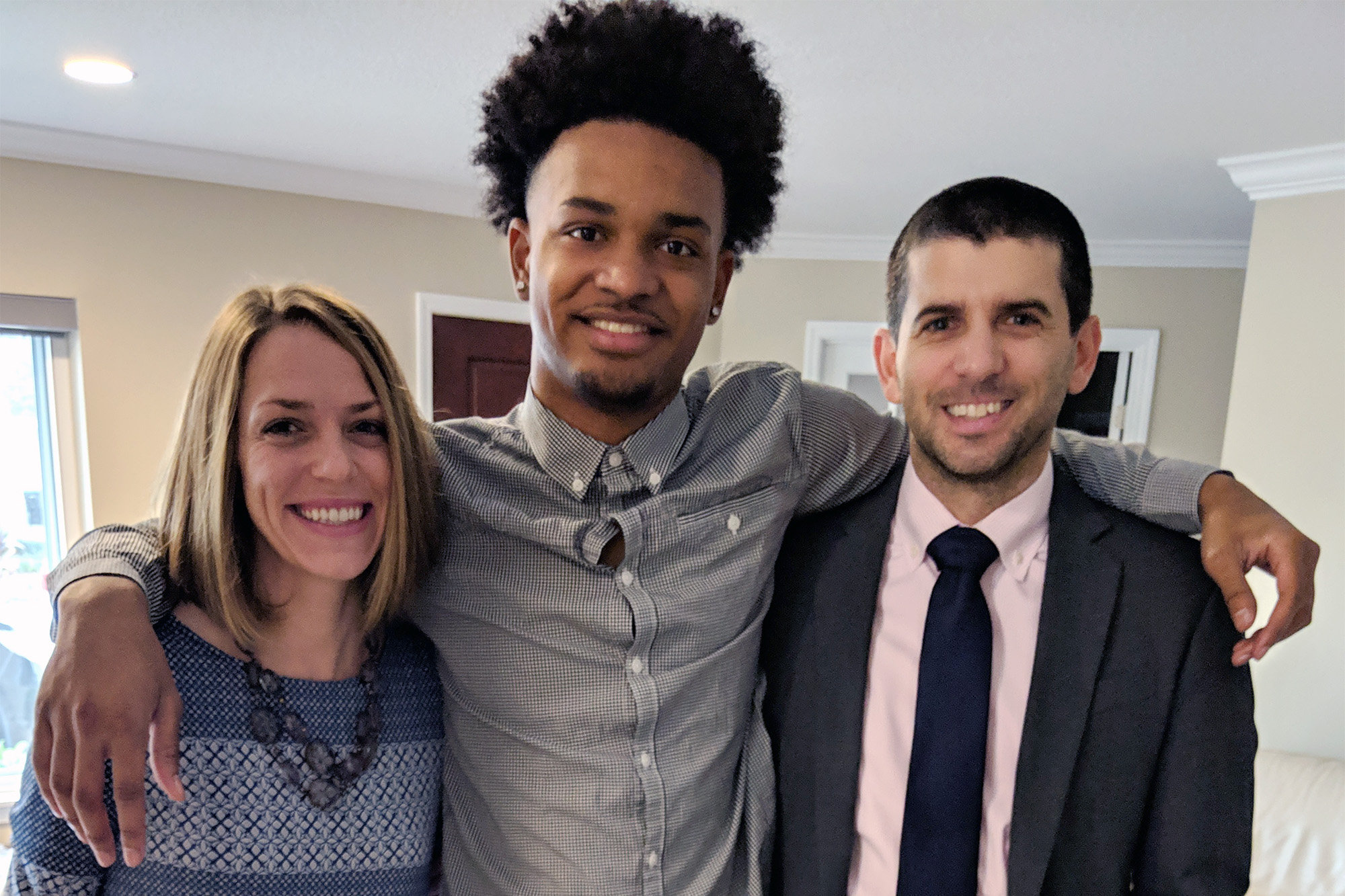Fostering compassion, maximizing impact
How one couple used their Giving Account® to find more homes for teens in foster care – inspired by their own adopted teenage son.


September 30, 2021
Peter and Kendra Amico of Orlando, Florida, have fostered younger children for more than a decade, but it wasn’t until they took in 17-year-old Alyx a few years ago that the unique hardships faced by teenagers in foster care became personal.
While younger foster kids are more easily placed with families in stable homes, Alyx was one of about 18,000 children each year forced to move in and out of group homes due to a shortage of families willing to foster a teen. His experiences had been bleak.
And research shows he’s not alone: Not only do teenagers in the foster system get adopted less frequently, but the constant instability also means they are more likely to suffer from depression and drop out of school. In fact, one study found that about half of foster teens will withdraw from high school and less than 10% will ultimately graduate from college.1

Becoming parents of a teen overnight was daunting but rewarding, Peter says.
“Just hearing about how impermanent his life was and what he encountered in group homes was eye-opening. It provided the impetus for me to encourage other people to foster teens and really get these kids out of group homes as early as possible,” says Kendra, an emergency room doctor.
The Amicos turned to their local child welfare organization, Embrace Families—where Peter also volunteers as a board member—to discuss how they could help improve the lives of older kids in the foster care system. They used a Fidelity Charitable® donor-advised fund (DAF) to help launch a program to support foster families of kids age 11 and older. That program, TeenEmbrace, has already seen remarkable impact: In its first year, data shows a 94% average placement stability rate among the 170 teens participating in the program.
A DAF is like a charitable investment account that offers many benefits—including the potential for tax-free investment growth to increase the amount available for giving. The Amicos funded the DAF with donations of appreciated stock. This meant they didn’t have to pay capital gains tax on the gain, as they would have if selling the stock, and those gains could be used instead for giving. Between that benefit and the investment growth in their DAF, the Amicos had an additional $42,000 available to give—funds that almost completely covered the cost to establish the TeenEmbrace pilot and help change the outcome for those 170 children.2

Fostering “has changed our hearts,” Kendra says.
“Once kids reach 10, 11 or 12, and certainly if they come into foster care at 16 or 17, we just have far fewer options for them,” says Maureen Brockman, vice president of the Embrace Families Foundation. “The Amicos really saw a need and wanted to help us address the issue of how we expand the number of family placements for our older kids.”
A powerful tool
The Amicos decided to open a DAF—which Fidelity Charitable® calls a Giving Account®—in 2012 because of the many advantages it offers them and the causes they support, joining a growing number of donors choosing to give this way due to the ability of a donor-advised fund to amplify impact. As the nation’s largest grantmaker, Fidelity Charitable, an independent public charity, now works with more than a quarter-million donors. Over its 30-year history, it has supported over 328,000 charities and distributed more than $51 billion in donor-recommended grants.
"We set up our DAF originally because we didn’t know where we wanted to give at the time, but we wanted a mechanism to encourage ourselves to give,” says Peter, a health care economist.

"You start doing life together, and you see the beautiful things that make them unique and are part of their story," Kendra says. "They become part of your family."
How it works: Donors contribute cash or assets, such as highly appreciated stock, to fund a DAF and can immediately qualify for a charitable tax deduction for the full value of that contribution. On top of that, no capital gains tax is owed on appreciated stock and asset donations. The contribution can then be invested tax-free in low-cost funds and other investments—until they’re ready for the DAF sponsoring charity to grant them to the organizations of their choice. The DAF essentially creates a ready reserve of funds that can be deployed when they are most needed. Last year, as donors responded to new needs during the pandemic for example, annual grants at Fidelity Charitable soared to $9.1 billion, a 24% increase.
Beyond providing valuable—and fruitful—tax benefits, a DAF also offers flexibility and ease, says Steve Lockshin, principal of AdvicePeriod, a financial advisory firm in Los Angeles.
“It’s just the overall simplicity and organization that so many people are looking for in their philanthropic giving,” says Lockshin, who is also a Fidelity Charitable donor. “I can easily recommend grants to charity from my DAF anytime I’m online, whenever and wherever I find the need. I can see how much I’ve given for the year so far. It offers great record-keeping features.”
Peter Amico agrees: “It’s very nice to not have to keep track of all of our giving to different organizations and to be able to easily see where we have given—and how much.”
Growing their impact
The Amicos are continuing to work closely with Embrace Families to find new ways to expand and financially support TeenEmbrace.

The Amicos see their Giving Account as a tool to help “grow our giving,” Peter says.
“Once Alyx moved into our home, it just became so salient and so personal to us that it was easy to start knocking on Embrace Families’ door with a little more urgency and say, ‘Hey, let’s talk about solutions together,’” Kendra says.
Recently, they have been talking with the organization about new strategies for increasing the number of families who accept teen placements and improving the success of those placements, Brockman adds.
“Peter and Kendra are a great example of donors who really understand the system,” she says. “What they have brought us is not only that generosity of spirit and compassion, but also a clear-sighted understanding of the experiences of the children and the families we serve. Because of that, they are able to help us implement and fund new ideas and innovations with the shared goals of improving the outcomes and well-being of the children.”
This article was created in partnership with Wall Street Journal Custom Content, a unit of The Wall Street Journal Advertising Department. The Wall Street Journal news organization was not involved in the creation of this content. This testimonial and the statements and opinions expressed in this article are based on interviews with Peter and Kendra Amico, who provided permission to use their names. This testimonial statement is not indicative of future programs and/or services and may not be representative of the experience of all donors.
Want more info before you open a Giving Account?
Sign up to receive occasional news, information and tips that support smarter philanthropic impact through a donor-advised fund.
How Fidelity Charitable can help
Since 1991, we have been a leader in charitable planning and giving solutions, helping donors like you support their favorite charities in smart ways.
Or call us at 800-262-6039
